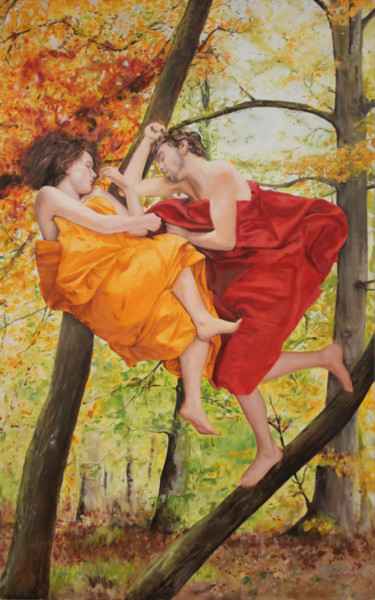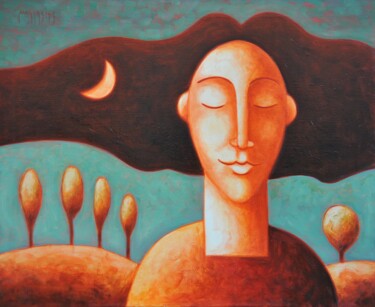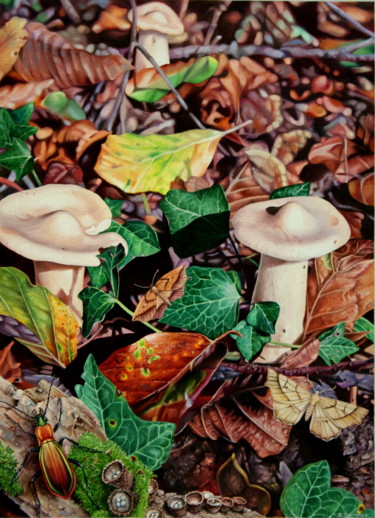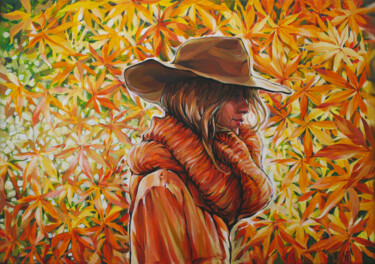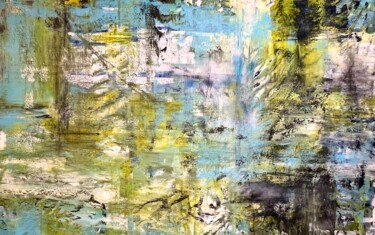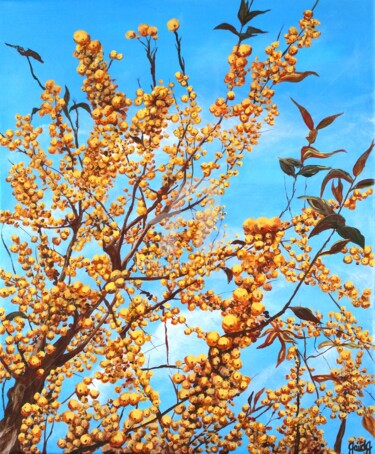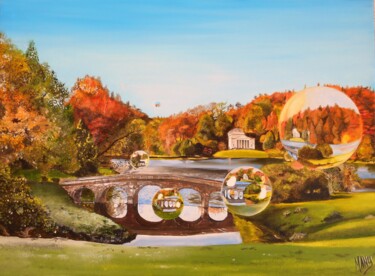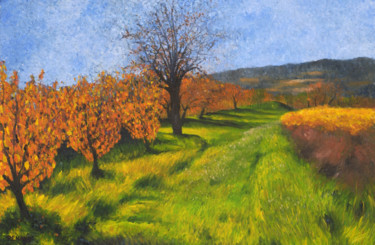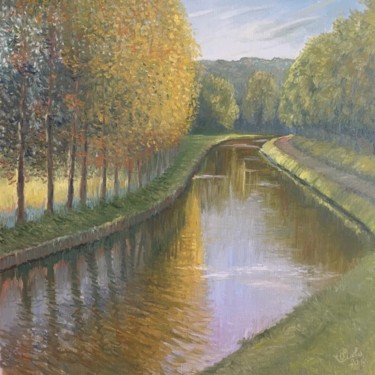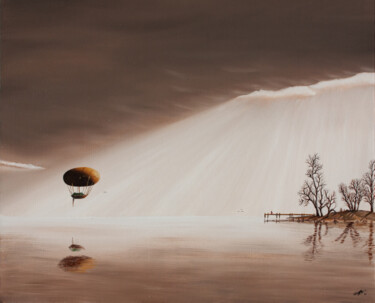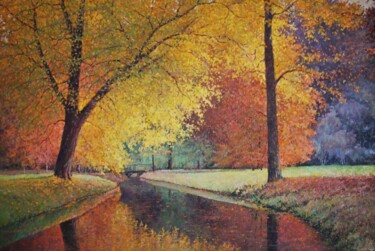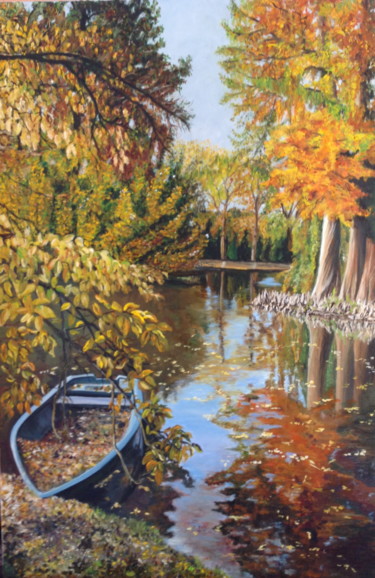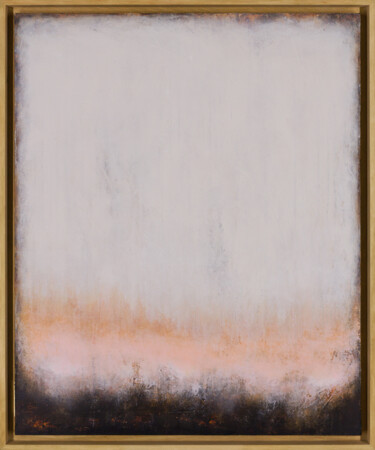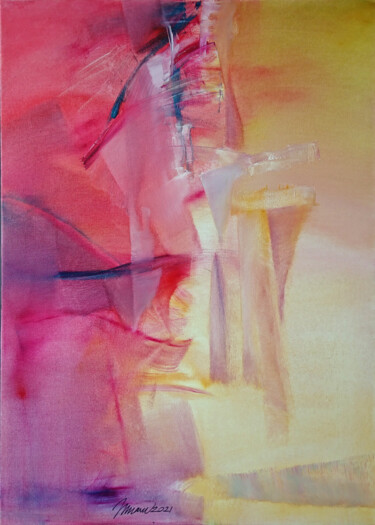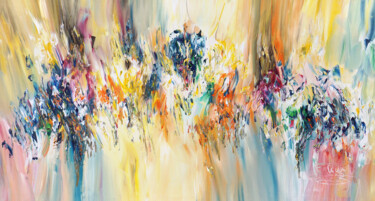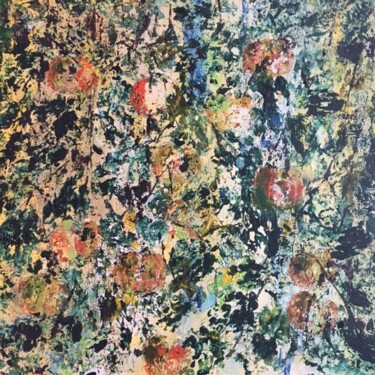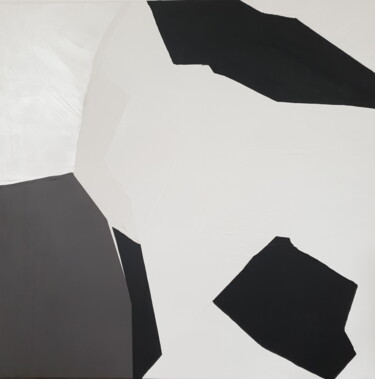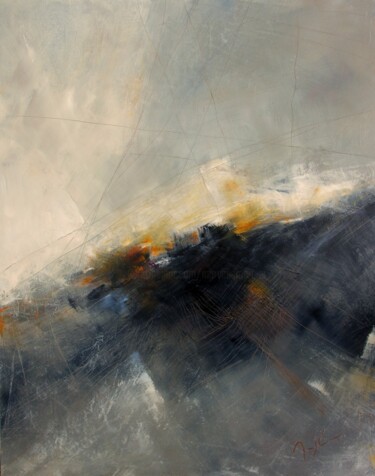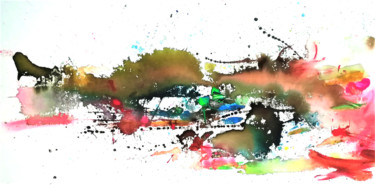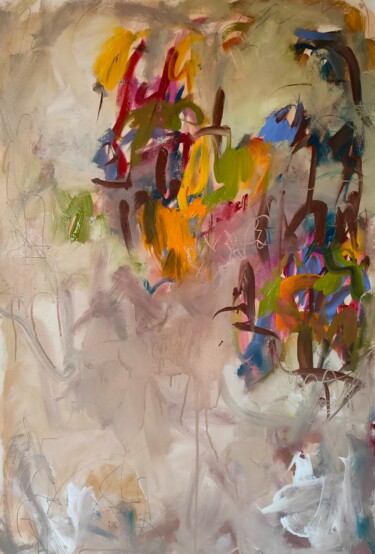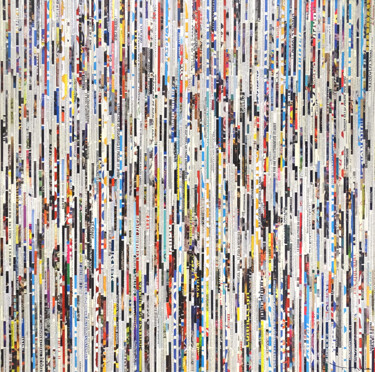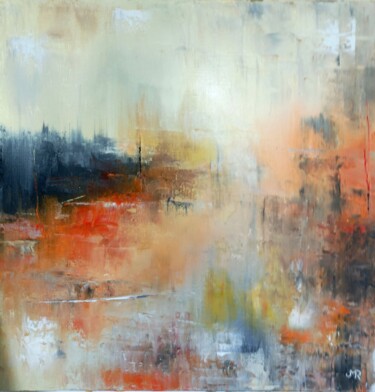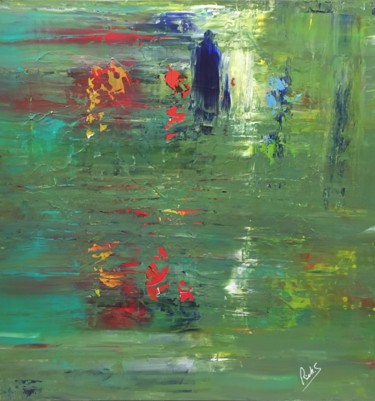 SEPTEMBER DAYDREAM L 1 (2023)Painting by Peter Nottrott.
SEPTEMBER DAYDREAM L 1 (2023)Painting by Peter Nottrott.
The most typical depiction of autumn
As every year, for centuries, probably since the dawn of time that no one remembers, autumn is back, once again, a season accompanied by the colors of brown, red and yellow, which stick on the skin of leaves, trees and soil. In painting, what has just briefly been described is typically immortalized by the figurative art of every current, trend and movement, through the depiction of somewhat related subjects, mainly aimed at capturing the aforementioned colors, which find their most typical arrangement within forests, meadows, seascapes and cityscapes, where sometimes, even some figures, more or less solitary, concentrate on silently contemplating the changes in the landscape, precisely determined by the advent of the well-known period that prepares for winter. Then, in order to summarize the aforementioned pictorial tendency, I take as a model two paintings by Van Gogh, depicting the garden of St. Paul's Hospital (Saint Remy de Provence), within which a solitary figure moves among the trees, which have now taken on the colors of autumn, becoming skillful manifestos of the symbolic meanings of the season in question, notoriously recognized as a time of balance, in which day and night have the same duration, aimed at inviting change, as well as the necessary evolution, which must, however, be welcomed with quietness and protection, just as when, slowly, we begin to cover ourselves with the first coats, in order to be ready to face the vital challenge of the colder months to come. In addition, taking the falling autumn leaves as an example, we should also think, in this particular context, of letting go of everything that has not worked in the past, in order to work on ourselves, preparing ourselves to welcome the new life, which will become clear in its manifestations only in the coming spring. Now, returning to Van Gogh, the first of the two paintings I want to analyze is The Garden of St. Paul's Hospital (Leaf-Fall) of 1889, a work preserved at the Van Gogh Museum in Amsterdam, capable of summarizing the painter's strong interest in the subject at hand, namely the green area surrounding the institution where his shelter of the time took place, ready to be spent even during autumn, a period cleverly suggested by the skillful choice of landscape colors, aimed at accompanying a solitary figure, moving among the leaves, which, now fallen, are swept away by a light breeze. The point of view of the canvas in question is from above, while a horizontal view is provided to us by The Garden of the Saint-Paul Hospital (1889), a work of similar theme, in which, however, the human figure appears decidedly more distant and smaller, perhaps less predisposed to initiate a dialogue with the viewer, in order to share with him his feelings about the arrival of the new season.
 BELOVED NATURE (2021)Painting by Emily Starck.
BELOVED NATURE (2021)Painting by Emily Starck.
 LUMIÈRE D'AUTOMNE (2020)Painting by Marianne Quinzin.
LUMIÈRE D'AUTOMNE (2020)Painting by Marianne Quinzin.
The revolution of abstraction
After these last two brief descriptions we have come to talk about abstraction, a current notoriously known for its ability to untie itself from the rendering of reality, while remaining bound to the emotions derived from it. In fact, the masterpieces of Jackson Pollock, Cy Twombly, Agnes Martin, and Sean Scully will tell us about autumn, though not by showing its trees, leaves, landscapes, and characters, but by evoking its feelings at times. Starting with the first artist, well-known is his canvas titled Autumn Rhythm (Number 30), a classic example of the painter's action painting, which was made in the fall of 1950, a time when Pollock was producing in his Springs studio in New York, a place where he captured the time of year in question, using the brown tones of falling leaves, whose floating in the sky is probably simulated by the practice of dripping. Despite my interpretation, it nevertheless appears undisputed how, if I had not been helped by the title, I would almost certainly not have arrived at the autumn-Pollock association, something that, given the peculiarities of abstraction, is naturally repeated in the subsequent masterpieces investigated, which are definitely linked to the period in question, thanks to the undisputed contribution made by the name they bear. I am talking about Cy Twombly's Autumn, Agnes Martin's Autumn Watch, and Sean Scully's The Fall, paintings unrelated to reality, although, in the case of the former painter, he unequivocally announces the time of year immortalized, not only by juxtaposing strong colors such as green, brown, and dark blue, to the more vivid yellows and purples, but also by inserting scribbled poetic fragments, in which one can unmistakably read the word autumn, which appears at the top of the canvas, done in irregular, dripping brown. Therefore, of all the abstract painters considered, levitating the clarity of the title or the autumnal hues presented, it is only Cy Twombly who makes explicit, once again by means of the use of language, the silent and abstract presence of the season in question, reiterating what had already been partly stated by the work's name, and thus realizing a kind of repetition of meaning, which finds space outside and inside the canvas. Finally, abstract autumn takes shape in the interpretations of Artmajeur artists, such as those of Studio Felix Günther, Vera Hoi, and Tatiana Bondarenko.
 AUTUMN FOREST FROM ABOVE (2023)Painting by Studio Felix Günther.
AUTUMN FOREST FROM ABOVE (2023)Painting by Studio Felix Günther.
Felix Günther Studio: Autumn forest from above
When I first saw this canvas, I thought of when I walk in the park during the season in question and lose myself in observing, from above my head, precisely where my eyes take shape, the leaves eagerly covering the ground. They are sometimes so numerous that I often find myself having to chase them away with my shoes, as if they had become a stubborn blanket for the autumn puddles. Here Studio Felix Günther's work makes me imagine that I see this expanse, again from above, but now no longer usurped by the presence of my body, as if it presented itself in the manner of a soft sea, where I would dare to dive in when it is now no longer time to put on my bathing suit. Well, my initial feelings about the painting turn out to be quite correct, since they are reflected in its title, which is ready to indicate not only the vision of leaves, but even that of an entire forest, which is besieged by the colors of autumn, which are juxtaposed, to repeat, one next to the other. Finally, speaking of Artmajeur's artist, Thomas Jankowski, a contemporary painter practicing in Germany, remains faithful, within his artistic investigation, to the abstract art, which he does his best to explore by presenting an enviable thirst for experimentation, where, lately, the acrylic technique has triumphed, of which he particularly appreciates the vibrant hues.
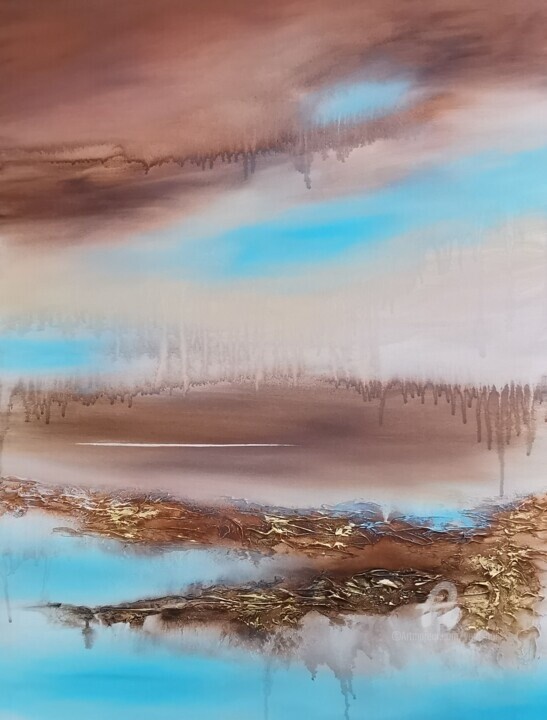 "AUTUMN IN PARIS" (2022)Painting by Vera Hoi.
"AUTUMN IN PARIS" (2022)Painting by Vera Hoi.
Vera Hoi: Autumn in Paris
I don't want to be obvious, but if I had been told about an autumn spent in Paris, I would surely have imagined seeing The Tuileries Garden with lots of brown leaves, accompanied by the more classic presence of the Eiffel Tower, a monument intent on watching us now since about 1889, so much so that I dare not even imagine the amount of autumns it has had the opportunity to contemplate, often wetting its metal with the frequent rains of the period. All right I'll interrupt myself, because in the case of the abstraction in question, my vision cannot possibly take figurative form, so much so that the colors of the Artmajeur artist's work, seem perhaps to synthesize at a minimum the impression given by a park just wet by a thunderstorm. Referring instead to the painter's own words, the painting in question was born out of the memory evoked by autumn walks in the French capital, of which Hoi sought to reproduce the beauty, charm and romance, pursuing the intention of celebrating this specific time of year, often associated with nostalgia and remembrance, now rendered through artistic intuition. As for Vera Hoi, on the other hand, she is an Austrian painter particularly fascinated by nature, a subject through which the artist succeeds in expressing the feelings born of her encounters, ideas and dreams. She, through her art, tries to achieve a very arduous intent: to capture beauty on canvas in order to spread it to the world.
 AUTUMN CELEBRATION (2022)Painting by Tatiana Bondarenko.
AUTUMN CELEBRATION (2022)Painting by Tatiana Bondarenko.
Tatiana Bondarenko: Autumn Celebration
We said that autumn lives in subjects, feelings, words and colors. It is precisely through the latter, as well as through the consequent sensations, that Bondarenko's work is expressed, which speaks to us about the much-mentioned season, simply showing us her most popular chromatics, aimed at taking shape on the support, through overlapping and irregular layers, giving rise, probably, to a kind of celebration of brown. This color, referring to the artist's words, is especially linked to one subject: the brownish gilding presented by the falling leaves, highly capable of bringing peace and tranquility to those who contemplate it. Moreover, the painter is keen to point out how in reality it is nature, in all its seasons, that always gives her inspiration and beauty, sensations that are sometimes realized through the silvery sparkle of winter; on other occasions through the murmuring freshness of spring; surely through the green of a chirping summer or simply by mentioning the golden triumph of autumn... Finally, speaking of Artmajeur's artist, Tatyana Bondarenko is a Russian painter residing in Armenia, who finds inspiration mainly from naturalistic subjects, always ready to convey confidence and calm, feelings necessary for an artist, whose main purpose is to spread, through her work, joy and lightheartedness, aimed at accompanying the viewer in experiencing love, peace and trust. All this is possible, according to Bondarenko, thanks to the abstraction, through which everyone can find strength, since they are free to imagine what they need most...

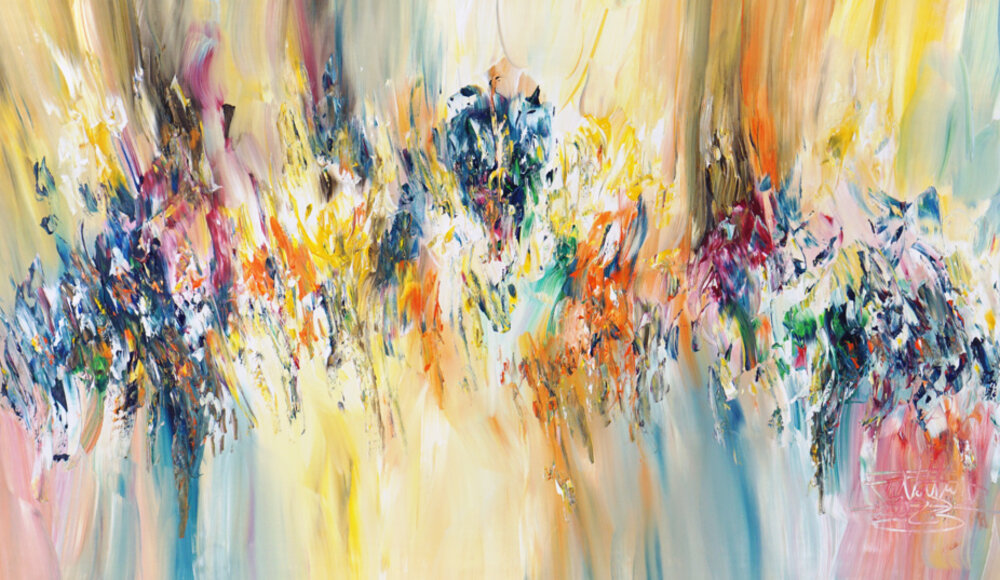
 Olimpia Gaia Martinelli
Olimpia Gaia Martinelli
